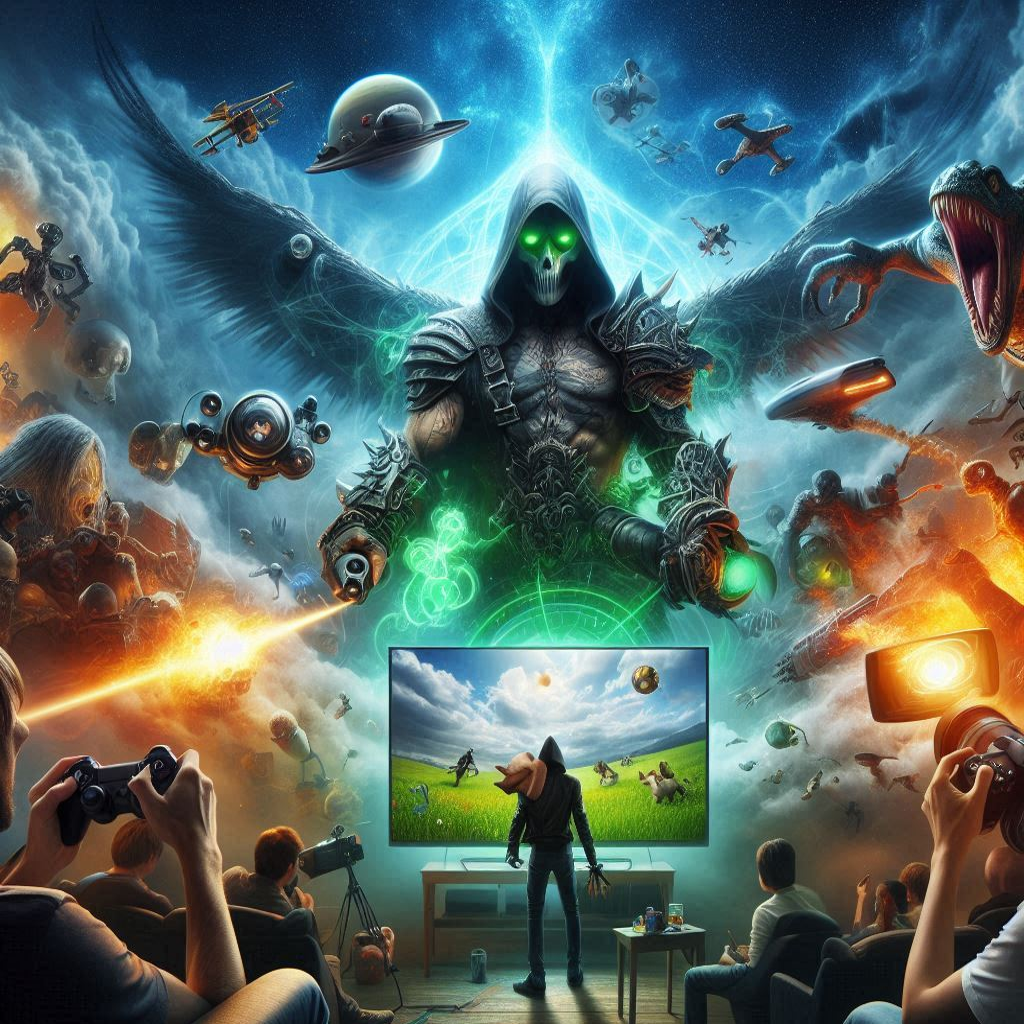Free-to-play games have changed the way people play and enjoy video games. Unlike traditional games that require players to pay upfront, free-to-play games let anyone join in without spending money at first. This has made gaming more accessible for everyone, especially kids and teens who may not have the money for expensive games.
The main idea of free-to-play games is to attract large numbers of players. Once they are playing, these games often offer special items or upgrades that players can buy. This is known as “microtransactions”. Many games also use “in-game advertisements” which means players can see ads while they play, allowing developers to earn money too.
One big example of a free-to-play game is Fortnite. It’s super popular because players can join for free and then choose to buy cool skins, dances, and other fun things for their characters. This makes players feel special and can keep them coming back for more.
As free-to-play games become more popular, traditional game makers are changing their strategy. Some are starting to make their games free too, or add microtransactions to make extra money. This shows how free-to-play games are not just a trend; they are shaping the whole gaming market.
In conclusion, free-to-play games are changing the rules of the gaming world, making it easy for anyone to play and enjoy. They are creating a new future where games can be fun, exciting, and affordable for everyone.
Understanding Free-to-Play Games
Free-to-play (F2P) games are video games that can be downloaded and played without an initial purchase. Instead of charging players upfront, these games often generate revenue through various monetization strategies. These strategies can include microtransactions, advertisements, and downloadable content (DLC).
Key Terms
- Microtransactions: Small purchases made within a game, often for in-game currency, skins, or other virtual goods.
- DLC (Downloadable Content): Additional content that can be downloaded to enhance the game, usually available for purchase.
- Player Retention: The ability of a game to keep players engaged over time.
- Monetization: The method through which a game generates revenue.
The Rise of Free-to-Play Games
In recent years, the F2P model has transformed the gaming industry. The model allows developers to reach a broader audience, as players are more likely to try a game that is free. According to industry analysts, “F2P games have become a significant part of the gaming market, accounting for almost 80% of mobile game revenue” (source).
Factors Contributing to the Popularity of F2P Games
- Accessibility: Players can start playing immediately without spending money.
- Social Engagement: Many F2P games include social features, encouraging players to invite friends and play together.
- Regular Updates: Developers often release new content to keep games fresh and players engaged.
Challenges in the F2P Model
Despite their popularity, F2P games face several challenges. One major issue is balancing monetization with gameplay. If players feel that they must spend money to enjoy the game fully, it can lead to frustration and negative reviews.
“When players feel pressured to spend money, they can have a negative experience, which ultimately harms player retention” (source).
Maintaining Fairness
It’s crucial for developers to create a fair environment. Many players prefer games where skill matters more than the amount of money spent. Solutions include:
- Cosmetic Items Only: Offering only non-gameplay affecting items for purchase.
- Earnable Premium Currency: Allowing players to earn in-game currency through gameplay, leading to fewer pay-to-win scenarios.
The Future of F2P Games
The future of F2P games looks promising, with expected growth driven by technological advancements and more immersive experiences. Technologies like virtual reality (VR) and augmented reality (AR) could open new doors for F2P games.
Potential Innovations
- Enhanced User Experience: Improved graphics and gameplay mechanics through advances in technology.
- Personalization: AI-driven tools to personalize gameplay experiences for users.
- Cross-Platform Play: Enabling players on different devices to play together seamlessly.
“The future of gaming is likely rooted in how well developers can adapt F2P models to evolving player expectations and technological possibilities” (source).
Conclusion
F2P games are reshaping the gaming market by making games more accessible while providing revenue opportunities for developers. As the industry continues to evolve, the challenge remains to maintain a balance between monetization and player experience. By focusing on fair practices and innovative gameplay, the future of F2P games looks bright.
What are free-to-play games?
Free-to-play games are video games that are available to play without any initial purchase. Players can download and enjoy the game for free, but there may be optional purchases for in-game items, upgrades, or additional content.
How do free-to-play games generate revenue?
The revenue from free-to-play games primarily comes from microtransactions, where players buy virtual goods or premium currency. Some games also incorporate advertising as another source of revenue, allowing companies to target players with promotional content.
What impact do free-to-play games have on traditional gaming models?
Free-to-play games are challenging traditional gaming models by reshaping how games are sold and monetized. They are increasing accessibility, allowing a broader audience to engage with games, which can lead to more diverse player communities. This shift may push traditional retailers and publishers to adapt their business strategies.
Are free-to-play games less valuable than paid games?
The value of a game is subjective and varies between players. Free-to-play games can offer a rich and engaging experience, often rivaling that of paid games. However, some players may feel that the constant push for in-game purchases detracts from the overall experience.
How do developers ensure fair gameplay in free-to-play models?
Developers implement various strategies to maintain balance in free-to-play games. These can include setting limits on powerful items available for purchase, ensuring that gameplay can be enjoyed without spending money, or offering ways for players to earn in-game currency through regular play.
What trends are emerging in the free-to-play gaming market?
The market is seeing a rise in hybrid models that combine free-to-play with subscription services or one-time purchases for premium experiences. Additionally, social interactions and community features are increasingly being integrated into games to enhance player engagement.
Will the popularity of free-to-play games continue to grow?
Given the accessibility and evolving nature of free-to-play games, it is likely that their popularity will continue to grow. As technology and gaming trends develop, more players are expected to embrace this model, contributing to its expansion in the market.
How do free-to-play games affect player retention?
Free-to-play games often employ various engagement strategies, such as daily rewards, special events, and ongoing updates, to keep players returning. These tactics can significantly enhance player retention, ensuring that the game remains appealing over time.




